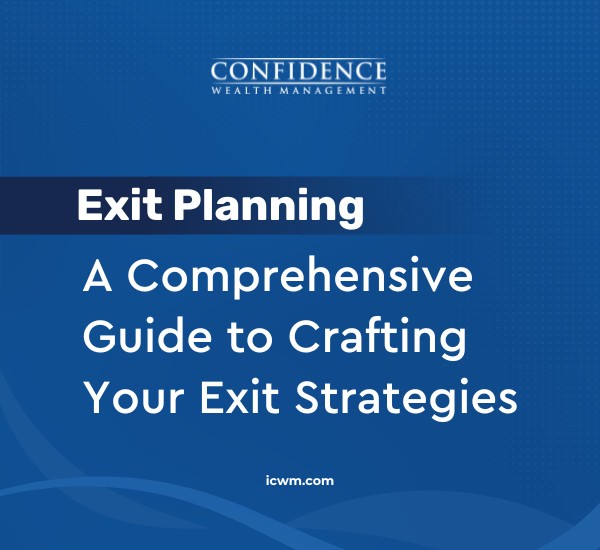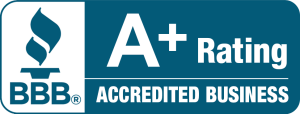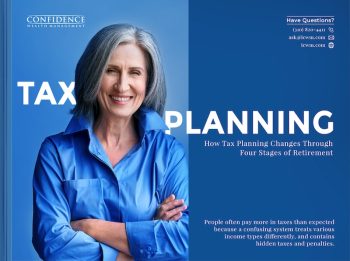If you read our earlier guide on pre-retirement, you know that a lot of thought goes into planning for these later phases before you reach them.
Now let’s get into what to expect and how to plan for your early, mid, and late retirement.
Early Retirement (Early 60s)
During early retirement, your income should be low since you probably haven’t begun taking RMDs (required minimum distributions) or your Social Security.
This is a perfect opportunity to strategically approach maximizing after-tax income.
Although saving and investing for retirement while you were working was relatively simple, in retirement, you will probably have income from several sources and that interplay can make your tax situation much more complicated.
Withdrawing just a few extra dollars in any given year can trigger additional taxes on your Social Security and premium surcharges for Medicare, adding up to $5,000 per year.
This is the time to create the best distribution strategy with your financial advisor, one that maximizes your income and minimizes your taxes.
Social Security
Although you may be tempted to collect early benefits at age 62, there are lots of good reasons to delay.
Earnings after age 62 can still increase Social Security retirement benefits if they replace no-or-low earning years. Since you probably worked during this time, you’re likely not drawing down your assets.
Your benefits also will increase by 8% for each year you delay up to 70 years of age, so it often makes sense to delay collecting Social Security until you are past full retirement age.
Health Insurance Options
One of the best situations to put yourself in for health insurance is to continue coverage from your employer or your
spouse’s employer.
While rare, some private employers and government entities offer health insurance options to early retirees.
If you can’t access your last employer’s plan, the Affordable Care Act (ACA) created a health insurance marketplace that’s available to everyone regardless of pre-existing conditions.
The fact is though that these options can be expensive, costing thousands of dollars annually until Medicare becomes an option at age 65.
Roth Conversions
Because your income is probably low, you should consider partial Roth conversions.
The idea behind this strategy is to take advantage of the lower tax bracket to fill your tax bucket for the next phases.
Partial Roth conversions can set you up nicely with tax diversification that you’ll benefit from once you turn 72, as you won’t have to take RMDs from those accounts.
Drawing Down Your Retirement Accounts
Early retirement is also a good time to make the important decisions on which accounts to draw down, especially if you’re delaying Social Security and need extra income.
The traditional rule of thumb was to always protect your retirement accounts and draw down non-retirement accounts. However, after ten years of a bull market and with people holding retirement accounts worth more than $1 million, the idea of drawing down non-retirement accounts might leave little flexibility at age 72 when it’s time to take RMDs.
You also have to consider that by drawing down non-retirement accounts, the majority of future withdrawals will be from retirement accounts and trigger additional taxes and charges outside of your control.
Talk with your financial advisor and tax professional to create a distribution strategy that avoids the higher tax bills that will surely appear at age 72 if you don’t prepare for them.
Mid Retirement (Mid-60s to Early 70s)
A lot of the strategies we just went over in the early retirement phase still make sense during middle retirement. You want to make sure you’re diversifying your taxes and monitoring your expenses. There are other considerations in this phase, however.
Medicare Makes a Difference
When you turn 65, Medicare will likely become your primary payer (unless you’re still working and covered by an employer group with over 20 employees).
You must follow strict guidelines for Medicare and supplemental insurance to take effect, but the work doesn’t stop once you’re enrolled. You should review your coverage and supplemental options every so often to make sure you have the coverage you need and aren’t paying too much.
Open enrollment occurs between October 7th and December 15th each year. Learn about other plans during this time and do some careful comparison shopping.
Remember that you need to keep saving for medical expenses during retirement, as Medicare doesn’t cover everything.
Focus on Social Security
When you reach age 67, or full retirement age (FRA), you should consider taking Social Security since you’re now eligible to receive your full, unreduced insurance amount.
If you delay taking benefits past your FRA, you’ll earn delayed credits. By waiting to age 70, you can increase your benefit amount by $1000 a month. Widowhood and divorce also affect benefits.
Determine when you should collect by performing a complete analysis of you and your spouse’s retirement income needs, including projected income streams based on various claiming ages.
Continue Tax Diversification
In a tax year where your income is high, consider withdrawing from your Roth IRA to decrease your taxable income. In years where your income is low, favor withdrawals from your traditional IRA accounts.
By aggressively withdrawing from traditional IRAs in low-income years, fewer assets will grow in those accounts thus less money will be subjected to the dreaded RMDs later on.
Later Retirement Years (After Age 72)
When you reach 72 you’ll be required to make withdrawals from your traditional IRAs, annuities, and usually from employer-sponsored retirement plans.
These RMDs kick in on most of your retirement accounts except for your Roth IRAs. You won’t have many opportunities to decrease these RMDs either, which typically amount to a 4% withdrawal in the first year and steadily increase after that.
With the amount you have to withdraw steadily increasing, your taxes will increase too. That’s why it’s so crucial to plan for this phase during the previous three phases, but there are some strategies you can still use once you’re here.
Tax-Efficient Charitable Planning
The qualified charitable distribution (QCD) allows people aged 70½ and over to donate money directly to charities from their IRAs in a tax-advantaged way.
Your total QCDs can’t total more than $100,000 in any given year per individual, but there are advantages compared to normal charitable gifts:
- A QCD counts towards your RMD for that year.
- The distribution is excluded from your taxable income, thus reducing the likelihood of other taxes on things like Social Security and Medicare premiums.
Very few people expect to itemize, so they’ll miss out on the income tax deduction for contributions to charities. However, you don’t need to itemize to benefit from a QCD because you’ll still get a full exclusion of that money from taxes.
While QCDs are a great planning tool, it might still make sense to donate appreciated securities instead if you own them and plan to itemize.
Step-Up Basis Strategy
Consider locating assets to benefit from capital gains and losses.
This is a strategy for benefiting from certain complicated tax arrangements and is worth exploring with your financial advisor and tax professional in greater detail.
Beware the Widow’s Penalty
Your tax filing status can hurt you, especially after a loved one passes. Because you no longer file jointly in this scenario and have no changes in income, your tax bill will be higher.
Once you’re required to file as a single person your tax bracket will also possibly increase, along with Medicare premiums, Social Security taxes, and more.
Keep in mind that if you have a dependent child, the penalty may not kick in for two years.
Consider How You’ll Pay for Long-Term Care
Non-traditional long-term care policies called “hybrids” blend some long-term care (LTC) insurance and life insurance. These have become popular, but people often feel tempted to tap the policy to pay for long-term care costs. This is often a mistake.
For example, you can use insurance money instead to pay for expenses, leaving behind a tax-free life insurance benefit for your heirs. Or you could use IRA money to pay LTC expenses and leave tax-free insurance money and taxable IRA money.
Your situation is unique to you and it makes sense to explore options with a financial advisor.
Develop a Retirement Optimization Strategy
What you want is a tax strategy that manages your assets for an “optimal drawdown” so you pay as little in taxes as possible. This strategy should be revisited every year in retirement.
Practice tax diversification by using accounts in three categories: taxable, tax-deferred, and Roth.
Consider using a withdrawal sequence on a year-by-year basis, staying flexible about where you pull income from to take advantage of your tax situation each year.
Conclusion
There’s a lot more to retirement than just collecting from Social Security and your retirement accounts.
The right knowledge and advice can make all the difference in avoiding high tax bills and preserving your hard-earned assets.
As experienced financial professionals, we help clients like you figure out the best retirement plan for their situation, so that when they’re ready, they can retire gracefully with peace of mind.
Please connect with us and let us help you plan for your dream retirement. We would be delighted to go on the journey
with you.










